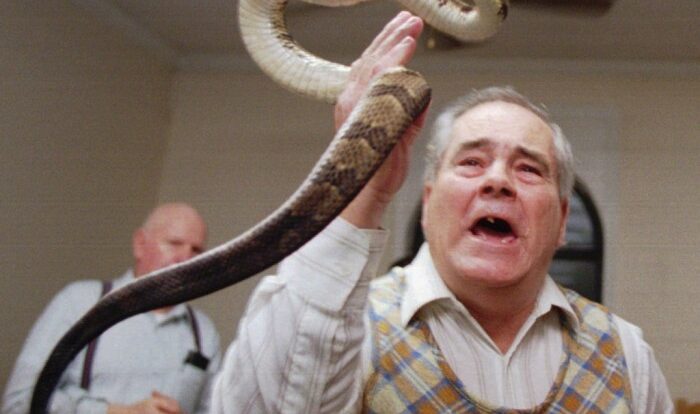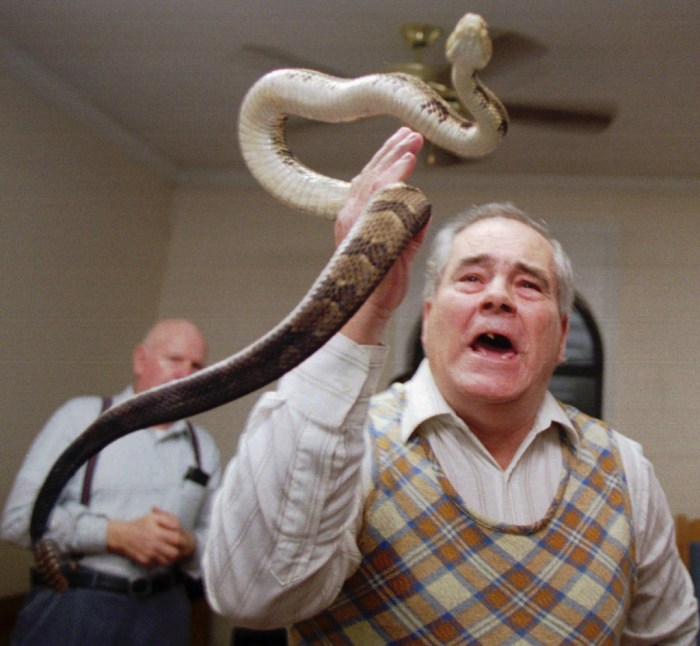
How to handle his snake yumi sin and fit kitty – Dive into the captivating world of snake handling with our comprehensive guide to caring for your Yumi Sin and Fit Kitty snakes. From understanding their unique behaviors to providing optimal captive care, this article will empower you with the knowledge and techniques to ensure their well-being and safety.
Unravel the mysteries of these fascinating creatures as we delve into their natural habitats, physical characteristics, and intriguing hunting instincts. Discover the secrets to handling them safely, minimizing stress, and creating a thriving environment for your serpentine companions.
Identifying the Species
Yumi Sin and Kitty snakes are two distinct species of snakes that share certain similarities in their physical characteristics. Yumi Sin snakes are a species of rear-fanged venomous snakes found in Southeast Asia, while Kitty snakes are a species of non-venomous snakes found in North America.
Both species have smooth scales, but Yumi Sin snakes typically have a more slender body and a more pointed head than Kitty snakes. Yumi Sin snakes also have a distinctive pattern of dark crossbands on their bodies, while Kitty snakes typically have a more uniform coloration.
Geographical Distribution
Yumi Sin snakes are found in a variety of habitats throughout Southeast Asia, including forests, grasslands, and swamps. Kitty snakes are found in a variety of habitats throughout North America, including forests, grasslands, and deserts.
Physical Appearance
Yumi Sin snakes are typically 2-3 feet long and have a slender body with a pointed head. They have smooth scales and a distinctive pattern of dark crossbands on their bodies. Kitty snakes are typically 1-2 feet long and have a more robust body with a blunt head.
They have smooth scales and a more uniform coloration.
Coloration
Yumi Sin snakes typically have a dark brown or black body with a series of light-colored crossbands. Kitty snakes typically have a light brown or tan body with a series of dark brown or black spots.
Understanding Behavior and Temperament

Understanding the natural behaviors and instincts of Yumi Sin and Kitty snakes is crucial for safe and responsible handling. These snakes exhibit unique characteristics that shape their feeding habits, hunting techniques, and defensive mechanisms.
Feeding Habits and Prey Preferences
Yumi Sin snakes are ambush predators, relying on camouflage and stealth to surprise their prey. They primarily feed on small rodents, such as mice, rats, and voles. Kitty snakes, on the other hand, are active hunters, using their keen eyesight and speed to pursue and capture prey.
Looking for tips on how to handle his snake yumi sin and fit kitty? Look no further than this helpful guide ! This comprehensive resource provides all the information you need to keep your snake and cat happy and healthy, including tips on feeding, grooming, and playtime.
They typically target small lizards, birds, and frogs.
Hunting Techniques
Yumi Sin snakes utilize a “sit-and-wait” approach, patiently waiting for prey to come within striking distance. They possess sharp fangs and inject venom into their victims, immobilizing them before swallowing them whole. Kitty snakes employ a “strike-and-chase” strategy, quickly pursuing their prey and using their agility to subdue it.
Defensive Mechanisms
Both Yumi Sin and Kitty snakes possess defensive mechanisms to protect themselves from predators and potential threats. Yumi Sin snakes may resort to playing dead or secreting foul-smelling musk. Kitty snakes, with their bright coloration, rely on warning displays and bluff strikes to deter potential attackers.
Potential Risks to Humans
While both Yumi Sin and Kitty snakes are generally not aggressive towards humans, they may bite if they feel threatened or provoked. Yumi Sin snake venom is mild and rarely causes significant harm to humans, but Kitty snake venom can be more potent and requires immediate medical attention.
Handling Techniques

Handling Yumi Sin and Kitty snakes requires patience, care, and proper techniques to ensure the safety of both the handler and the snakes. This section will provide a step-by-step guide for handling these snakes, explaining the proper techniques for restraining, moving, and releasing them while minimizing stress and potential hazards.
Restraining Techniques
- Approach calmly:Slowly approach the snake from the side, avoiding sudden movements or loud noises.
- Support the snake:Use one hand to gently support the snake’s body, holding it close to your body.
- Secure the head:With your other hand, gently grasp the snake’s head behind the jaw, avoiding pressure on the eyes.
- Hold firmly but gently:Maintain a firm grip on the snake’s head and body, but avoid squeezing too tightly.
Captive Care and Husbandry

Providing optimal captive care for Yumi Sin and Kitty snakes is essential for their well-being and longevity. This includes creating a suitable enclosure, maintaining appropriate temperature and humidity levels, and providing a nutritious diet and adequate water supply.
Enclosure
Yumi Sin and Kitty snakes require an enclosure that is large enough to accommodate their size and activity level. The enclosure should be escape-proof and have secure ventilation to prevent respiratory issues. Provide hiding places, such as caves or logs, to allow the snakes to feel secure and reduce stress.
Temperature and Humidity
Yumi Sin and Kitty snakes are ectothermic, meaning they rely on external heat sources to regulate their body temperature. Maintain a temperature gradient within the enclosure, with a warm end of 80-85°F (27-29°C) and a cool end of 70-75°F (21-24°C).
Nighttime temperatures can drop slightly to 65-70°F (18-21°C).
Humidity levels should be maintained between 50-60% to prevent dehydration and respiratory problems. Misting the enclosure regularly or providing a humid hide can help achieve this.
Want to master the art of handling your snake Yumi Sin and fit kitty? Check out this comprehensive guide here . It covers everything you need to know, from the basics of handling to more advanced techniques. Whether you’re a seasoned pro or a newbie, you’ll find valuable tips and insights in this guide.
Substrate
The substrate in the enclosure should be absorbent, non-toxic, and easy to clean. Suitable options include aspen shavings, coconut husk, or cypress mulch. Avoid substrates that can cause impaction, such as sand or gravel.
Diet
Yumi Sin and Kitty snakes are carnivorous and feed primarily on small rodents. Offer frozen/thawed mice or rats of an appropriate size for the snake’s age and size. Feed the snakes once or twice a week, depending on their age and activity level.
Water Provision
Provide a shallow water bowl with fresh, clean water at all times. Change the water regularly to prevent contamination.
Common Health Concerns and Veterinary Care

Yumi Sin and Kitty snakes, like other reptiles, are susceptible to various health issues. Recognizing these concerns and providing appropriate veterinary care is crucial for their well-being.
I’m working on how to handle his snake yumi sin and fit kitty, but I’m also curious about how to increase insurance agent productivity. There are some great tips in this article that I’m going to try out. I’ll let you know how it goes.
Anyway, back to my snake and kitty.
Respiratory Infections
Respiratory infections are common in snakes and can be caused by bacteria, viruses, or fungi. Symptoms include sneezing, wheezing, and difficulty breathing. Prompt veterinary attention is necessary to diagnose and treat the underlying cause, which may involve antibiotics, antivirals, or antifungals.
Skin Infections
Skin infections, often caused by bacteria or fungi, can manifest as rashes, blisters, or abscesses. Treatment typically involves topical or oral antibiotics, antifungal medications, and maintaining a clean and dry environment.
Digestive Issues
Digestive problems, such as constipation, diarrhea, or vomiting, can arise from improper diet, parasites, or underlying medical conditions. Adjusting the diet, administering medication for parasites, or addressing the underlying cause is essential for recovery.
Metabolic Bone Disease
Metabolic bone disease occurs when snakes lack adequate calcium or vitamin D3. Symptoms include soft or deformed bones, lethargy, and muscle weakness. Treatment involves providing a calcium-rich diet, vitamin D3 supplements, and addressing any underlying metabolic issues.
Preventive Measures and Veterinary Check-ups, How to handle his snake yumi sin and fit kitty
Regular veterinary check-ups are vital for detecting and addressing health concerns early on. Proper husbandry, including maintaining a clean enclosure, providing a balanced diet, and ensuring adequate humidity and temperature, can help prevent many health issues. Observing the snake’s behavior, appetite, and overall appearance can also help identify potential health problems.
Ultimate Conclusion
Mastering the art of snake handling is a rewarding experience that deepens your bond with these extraordinary creatures. By embracing the principles Artikeld in this guide, you can provide your Yumi Sin and Fit Kitty snakes with a life filled with comfort, health, and enrichment.
Remember, responsible snake ownership requires a commitment to their well-being and a deep appreciation for their unique nature.
Helpful Answers: How To Handle His Snake Yumi Sin And Fit Kitty
What is the ideal enclosure size for a Yumi Sin snake?
A 20-gallon enclosure is suitable for a single Yumi Sin snake.
How often should I feed my Fit Kitty snake?
Fit Kitty snakes should be fed once a week.
What are the common health concerns associated with Yumi Sin snakes?
Respiratory infections and scale rot are common health issues in Yumi Sin snakes.





